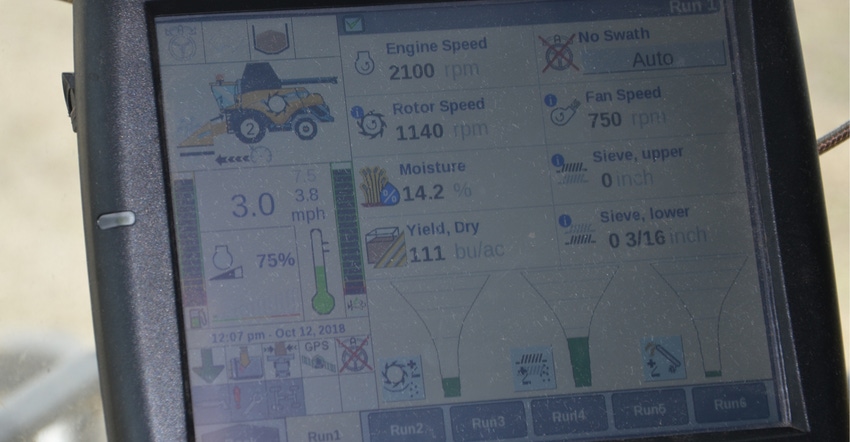
Ask Shaun Casteel how to set up fields for top soybean yields, and he draws a big circle, printing the word “yield” inside. Then, the Purdue University Extension soybean specialist draws lines with arrows all around the circle. On each one he writes either practices to follow to set up for high yield or challenges to manage to avoid a negative impact on yield.
“What I’m talking about is a set of management practices to implement if you’re serious about top yields,” Casteel says. “There’s no doubt that a key ingredient in obtaining high soybean yields consistently is practicing top management skills. Then cooperation from the weather seals the deal.”
Factors surrounding Casteel’s circle include timely planting, variety selection, lower seeding rates, correct plant structure for maximum nodes and pods, and ensuring adequate soil fertility. “We need to shoot to plant soybeans in late April,” he says. “That means thinking in terms of planting soybeans when soil temperatures are above 50 degrees F vs. the traditional 60 degrees F.”
Other factors impacting Casteel’s yield circle include disease management, especially of diseases that are becoming more troublesome, such as frogeye leaf spot, plus insect management. It’s also important to control weeds early, he says.
Prime example
Tyler Richardson and his father, Greg, Westport, Ind., have seen what can happen when they apply good management practices and the weather cooperates. Twenty-five acres weighed for a contest yield averaged 114 bushels per acre. The variety was Asgrow AG36X6.
“It took some 120- and 130-bushel-plus-per-acre beans to average 114 bushels per acre,” Tyler says. The entire 186-acre field where the 25 acres was located averaged 94 bushels per acre. Soils are silt loams with somewhat poor natural drainage. There is working tile in the field, but it’s not pattern-tiled, Tyler notes.
“I knew the yield monitor had to be right because I calibrated it myself three times, but when those yields popped up, I asked the seedsman to bring the weigh buggy to make sure,” he says. “The yield monitor was right.”
The Richardsons check several of the management boxes Casteel references. “I like to have all our soybeans planted in April when we can,” Tyler says. “We opt for seed treatment with fungicide and insecticide plus Ilevo. We’ve also dropped back to seeding rates which average around 130,000 seeds per acre.”
That delivers stands of 110,000 to 115,000 plants per acre. Tyler also credits deep tillage every year and 22-inch rows for part of their success. “Plants are closer together than in 15-inch rows, and that gives them more pushing power if there’s crusting,” he says. “I’ve experimented splitting middles to form 11-inch rows, and I also get shorter plants with far more nodes and pods in 22-inch rows.”
He plants an inch to 1.5 inches deep. “That gets seeds down to moisture, and where more goodies are for seedlings,” Tyler says.
About the Author(s)
You May Also Like




